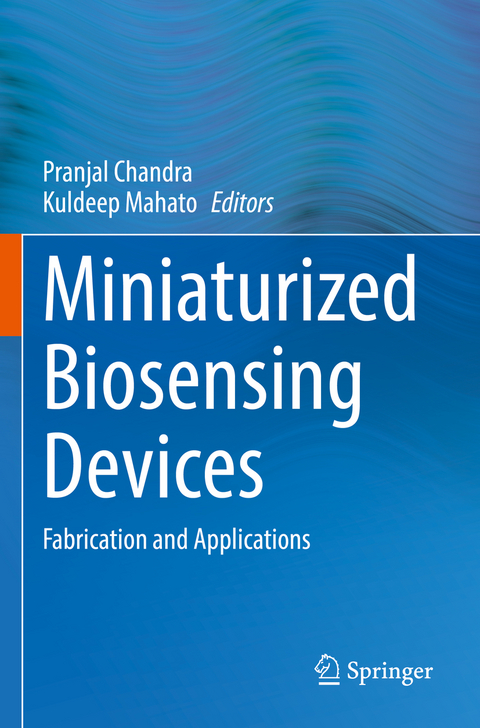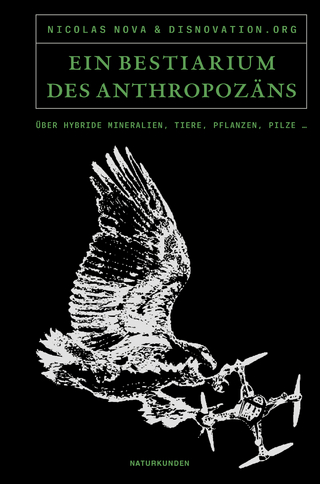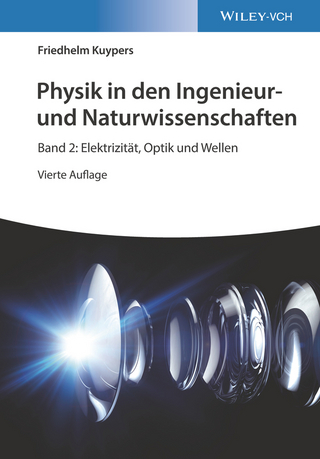
Miniaturized Biosensing Devices
Springer Verlag, Singapore
978-981-16-9899-6 (ISBN)
This book presents tools and techniques for the development of miniature biosensors and their applications. The initial chapters discuss the advancements in the development of the transduction techniques, including optical, electrochemical, and piezoelectric, which are used for miniaturized biosensors. The book also reviews several technologies, such as nanotechnology, nanobiotechnology, immune-technology, DNA-technology, micro-manufacturing technology, electronic-circuit technology to increase the miniaturization and sensitivity of the biosensor platform. Subsequently, the chapters illustrate the applications of miniaturized biosensing systems in point-of-care monitoring of treatment and disease progression, environmental monitoring, food control, drug discovery, forensics, and biomedical research. Towards the end, the book discusses the advanced applications of biosensors in water quality monitoring, especially on-line detection systems and on-site detection of pesticides, heavy metals and bacteria in water. This book is an invaluable source for scientists working in biochemical engineering, bioengineering, and biomedical engineering in academia and industry.
Pranjal Chandra is an assistant professor at the School of Biochemical Engineering, Indian Institute of Technology (BHU), Varanasi, India. He earned his Ph.D. from Pusan National University, South Korea, and did post-doctoral training at Technion-Israel Institute of Technology, Israel. His research focus is highly interdisciplinary, spanning a wide range in biotechnology, nanobiosensors, material engineering, and nanomedicine. He has designed several commercially viable biosensing prototypes that can be operated for onsite analysis for biomedical diagnostics. He is an associate editor and editorial board member of variousinternational journals, including Scientific Reports, Sensors International, Frontiers in Bioengineering andBiotechnology, Molecules, Frontiers in Sensors, and Green Analytical Chemistry. He has also been appointed as Advisor for the Biomedical Sensors Domain and Sensor Networks Systems, Institution of Engineering and Technology (IET), Michael Faraday House, London, United Kingdom. Prof. Chandra is author of over 110 high impact publications, including research/reviews papers and invited book chapter. He has published 13 books on various aspects of biosensors/medical diagnostics/material engineering. Prof. Chandra is the recipient of many prestigious awards, coveted honours, and fellowships such as DST Ramanujan fellowship (Government of India); Early Career Research Award (ECRA) (DST, Government of India); BK -21 and NRF fellowship, South Korea; Technion Post-Doctoral Fellowship, Israel; Nano Molecular Society India Young Scientist Award; BiotechResearch Society India (BRSI) Young Scientist Award; Young Engineers Award 2018; Highly Cited Corresponding authors in The Royal Society of Chemistry (RSC), Cambridge, London; Top 10% cited articlein the General Chemistry Section RSC Journal, Cambridge, London; and Gandhian Young TechnologyInnovation Award (GYTI) 2020. Prof. Chandra is also listed among the world’s top 2% scientist in the year2020 and 2021 by Stanford University, USA. Kuldeep Mahato is currently working at the Department of NanoEngineering, University of California San Diego, USA, as a post-doctoral scholar. He received his Ph.D. from the Indian Institute of Technology Guwahati, Assam, India. His research interests are majorly focused on the development of sensors/biosensors for clinical, food safety, and (bio)security applications. His interests extend to the self-powered biofuel-cell-based technologies for the development of wearable, implantable, and ingestible clinical and biomedical applications using multidisciplinary approaches where he has been solving various challenges associated with the development of commercially viable prototypes. He has authored more than 30 research articles in journals of high repute. Hehas received the prestigious national award “Gandhian Young Technological Innovation—2020” for his research innovation. Further, he has also served as guest editor in various peer-reviewed journals, including Sensors, Biosensors, Micromachines etc. He has been a reviewer for several journals, including Biosensors and Bioelectronics, Sensors International, Sensors, Biosensors, and Materials Science for Energy Technologies etc.
Chapter 1: Sensor-assisted Next-generation Diagnostics: Emerging Concepts, Biomarkers, Technologies, and Challenges.- Chapter 2: Carbon electrodes as emerging platforms for miniaturization of electrochemical biosensors.- Chapter 3: Ion track-based nanofluidic biosensors.- Chapter 4: Clinical Biosensors: Considerations and Development Process.- Chapter 5: Development and Implementation of Portable Biosensors in Microfluidic Point-of-Care Devices for Pathogen Detection.- Chapter 6: Recent trends in clinical diagnosis for viral disease detection based on miniaturized biosensors.- Chapter 7: Continuous glucose monitoring for diabetes management based on miniaturized biosensors.- Chapter 8: Transforming Healthcare Technologies With Wearable, Implantable, And Ingestible Biosensors and Digital Health.- Chapter 9: Multiplexed biosensors for efficient diagnosis of the clinical conditions towards health management.- Chapter 10: Biocompatible sensors are revolutionizing healthcare technologies.- Chapter 11: Onsite quality controls for food safety based on miniaturized biosensing.- Chapter 12: Gold nanoparticle-based colorimetric sensing of metal toxins.- Chapter 13: Miniaturized sensing strategies for next-generation nitrogen monitoring.- Chapter 14: Recent Trends Towards the Development of Biosensors for Biosafety and Biohazards.- Chapter 15: Commercial aspects and market pull of biosensors in diagnostic industries.
| Erscheinungsdatum | 10.05.2023 |
|---|---|
| Zusatzinfo | 1 Illustrations, black and white; XII, 368 p. 1 illus. |
| Verlagsort | Singapore |
| Sprache | englisch |
| Maße | 155 x 235 mm |
| Themenwelt | Naturwissenschaften ► Biologie ► Allgemeines / Lexika |
| Technik ► Umwelttechnik / Biotechnologie | |
| Schlagworte | Biosensor • Clinical Diagnosis • Environment surveillance • Health Monitoring • miniaturization |
| ISBN-10 | 981-16-9899-6 / 9811698996 |
| ISBN-13 | 978-981-16-9899-6 / 9789811698996 |
| Zustand | Neuware |
| Haben Sie eine Frage zum Produkt? |
aus dem Bereich


